
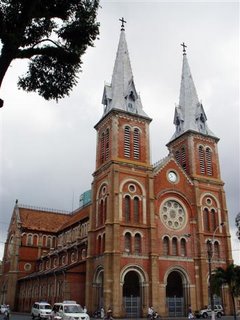

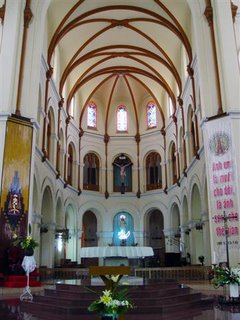 Notre Dame Cathedral
Notre Dame CathedralThe late 19th century cathedral has a neo-Romanesque facade with twin towers. A statue of the Virgin is located in the center front. Lots of stained glass windows were lost during World War Two and have never been replaced. Today in the interior neon tubes emphasize the altar and other prominent spots.
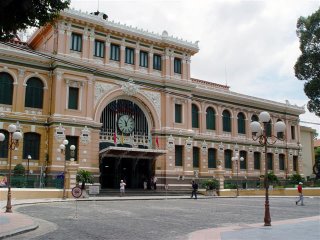
 Post Office
Post OfficeThe Post Office recalls European railway stations, particularly in the vaulted and glazed interior. Its "modern" skylight also recalls European buildings of the later nineteenth century (like Paris' Les Halles or Milan's Galleria). The three-story building has a central pavilion with flanking symmetrical extensions. Like European buildings influenced by Renaissance architecture, it has clearly defined bays and logical fenestration.




Reunification Palace the former presidential palace of South Vietnam.
On the morning of April 30, 1975, the first communist tnaks broke through the gates of the presidential palace. A soldier then ran to the fourth floor to unfurl a VC flag. General Minh, Who had only become the head of state of South Vietnam 43 hours earlier surrendered. It is now called the Palace of Reunification
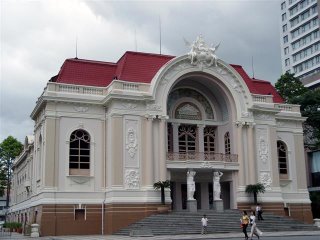
Municipal Theater or Opera House
This restored three-story theater has an auditorium with 1800 seats and with modern light and sound equipment. originally, it was built by the French and intended as an opera house. In 1955 it became South Vietnam's National Assembly building. Today the building has been renovated as a theater for a variety of traditional and classical performances--plays, concerts, ballet, opera, and Vietnamese traditional dance. Colonial architecture in Vietnam usually adopts Greco-Roman motifs--here a large central arch, a type of Ionic column, coffered ceiling, and the caryatids (though less modestly clothed than Greek examples). The applied ornament, balustrades, cartouches, and roof are particularly French.
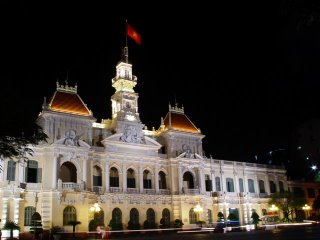
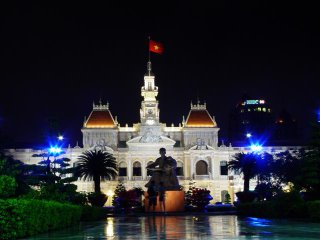
People's Committee Building (formerly City Hall)
The French colonists, who occupied Vietnam, wanted to feel at home. Not only did they import their culture, religion, and food, but they imported French architectural styles as well. Cathedrals, like Notre Dame in Ho Chi Minh City and St. Joseph's in Hanoi, imitate French Romanesque and Gothic ecclesiastical styles. Numerous villas of French design border spacious avenues, also of French lineage. The Post Office in Ho Chi Minh City was designed by Gustave Eiffel. (A copy of his tower was erected in Dalat, a Vietnamese town favored by colonists for vacations.) This civic building, originally the City Hall, was modelled on a similar building in Paris. See this site for a photograph of the Paris Hôtel de Ville (or city hall). The Paris City Hall was rebuilt after the 16th century original building was set to fire during the 1870 Parisian revolution.
Notre Dame Cathedral, Post Office, Reunification Palace, People's Committee Building, Municipal Theater
Reference: Vietnam Index; Reunification palace
No comments:
Post a Comment